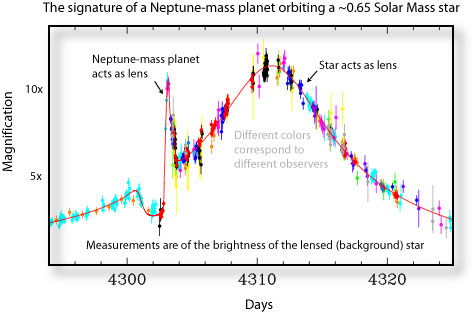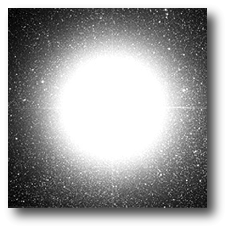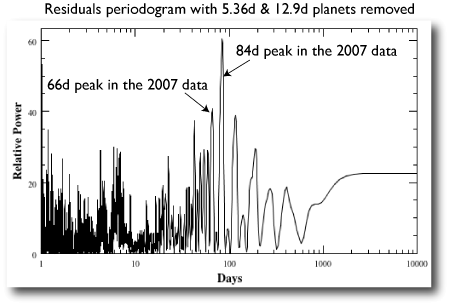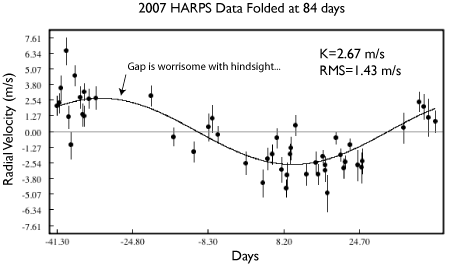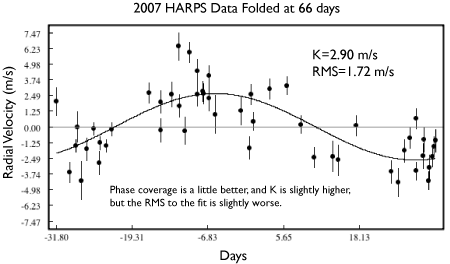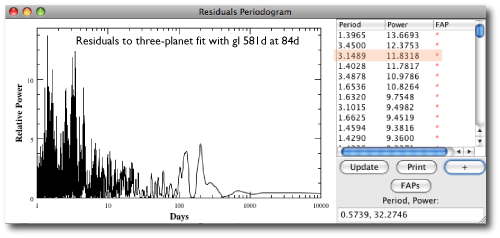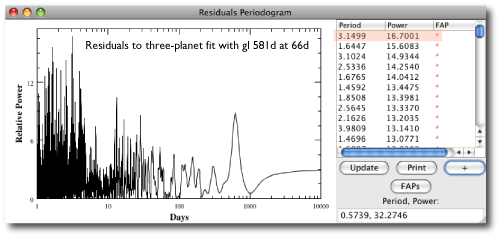I’m nostalgic for ’97, when the discovery of a new extrasolar planet was literally front-page news. What’s now cliche was then fully viable poetic sweep. Epicurus and his multitude of worlds. Bruno burning at the stake. In that frame of mind, it’s fascinating to go back and read John Noble Wilford’s extended New York Times piece, written at the moment when the number of known extrasolar planets equaled the number of planets in our own solar system.
Some of the hyperbole still seems fresh, especially with regard to the frequency and diversity of planetary systems:
And the discoveries may be only beginning. One recent study suggested that planets might be lurking around half the Milky Way’s stars. Astronomers have already seen enough to suspect that their definition of planets may have to be broadened considerably to encompass the new reality. As soon as they can detect several planets around a single star, they are almost resigned to finding that the Sun’s family, previously their only example, is anything but typical among planetary systems.
At the recent Porto conference, the Geneva team not only reiterated their claims regarding the frequency of low-mass planets, but actually upped their yield predictions. According to a contact who heard Stephane Udry’s talk, the latest indication from HARPS is that between 38% (at the low end) and 58% (at the high end) of nearby solar-type stars harbor at least one readily detectable M<50 Earth-mass planet. This is quite extraordinary, especially given the fact that were the HARPS GTO survey located 10 parsecs away and observing the Sun, our own solar system (largely in the guise of Jupiter’s decade-long 12-m/s wobble) would not yet be eliciting any particular cause for remark.
It also looks like planets beyond the snowline are quite common. In yesterday’s astro-ph listing, there’s a nice microlensing detection of a cold Neptune-like planet orbiting a ~0.65 solar mass star with a semi-major axis of at least 3 AU. The microlensing detections to date indicate that Neptune-mass objects are at least three times as common as Jupiter mass objects when orbital periods are greater than five years or so. Microlensing detections are an extremely cost-effective way to build up the statistics of the galactic planetary census during belt-tightening times. Much of the work is done for free by small telescope observers.
Yet another dispatch pointing toward a profusion of planets comes from an article posted last week on astro-ph by Brendan Bowler of the IfA in Hawaii. Work that he’s done with John Johnson and collaborators indicates that the frequency of true gas giant planets orbiting intermediate-mass stars (former A-type stars like Sirius that are now in the process of crossing the Hertzsprung gap) is a hefty 26% within ~3 AU.
An embarrassment of riches? Certainly, the outsize planetary frequency means that the cutting-edge of the planet-detection effort will be shifting toward the Sun’s nearest stellar neighbors, as these are the stars that offer by far the best opportunities for follow-up with space-based assets such as HST, Spitzer, JWST et al.
As competition for ground-based large-telescope RV confirmation of run-of-the-mill planet transit candidates orbiting dim stars heats up, the threshold magnitude (at a given bandpass) at which stars become largely too faint to bother with will grow increasingly bright. We’re talking twelve. Maybe nine. Pont et al., in their discovery paper for OGLE-TR-182b refer to this threshold as the “Twilight Zone” of transit surveys:
The confirmation follow-up process for OGLE-TR-182 necessitated more than ten hours of FLAMES/VLT time for the radial velocity orbit, plus a comparable amount of FORS/VLT time for the transit lightcurve. In addition, several unsuccessful attempts were made to recover the transit timing in 2007 with the OGLE telescope, and 7 hours of UVES/VLT were devoted to measuring the spectroscopic parameters of the primary. This represents a very large amount of observational resources, and can be considered near the upper limit of what can reasonably be invested to identify a transiting planet.


